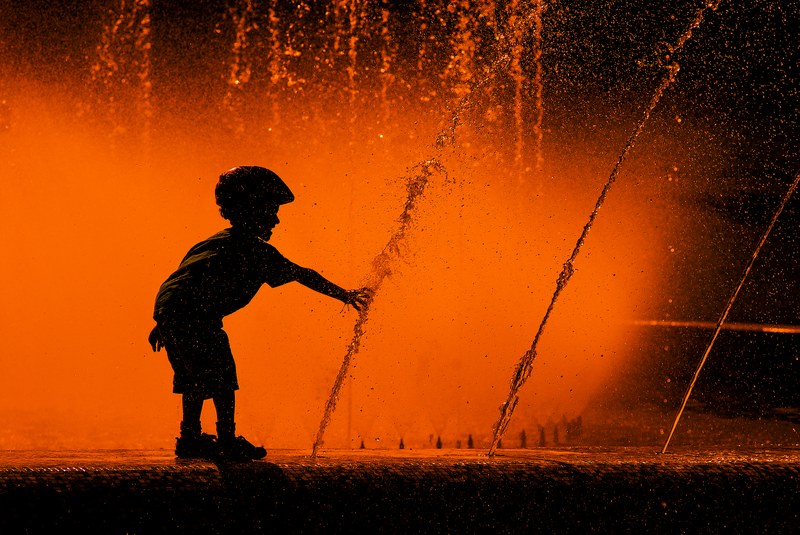Significant water savings can be achieved in key economic sectors through new measures which will be essential to boost the European Union’s water resilience, according to a European Environment Agency (EEA) briefing published today.
Achieving water savings is increasingly urgent. Water scarcity, driven by climate change, is impacting water availability. The over-exploitation of freshwater resources persists in certain hotspots and is projected to worsen in the future. Southern Europe and densely populated areas will be particularly affected. Further improvements in water efficiency will be essential in strengthening the EU’s resilience to unpredictable water availability.
The EEA briefing ‘Water savings for a water-resilient Europe’ says the economic sectors with the highest water abstraction levels also have the potential to save the most water. They should be considered as priority sectors where significant water savings can be made. These include key economic sectors like electricity production, agriculture, public water supply and manufacturing.
Reducing losses and leakages and improving water efficiency through technical and operational measures will significantly increase water savings. Diversifying water supply with non-conventional sources such as reuse, desalination, and rainwater harvesting can also help enhance water resilience, provided there is also careful consideration of the impacts of such measures on energy use, climate mitigation, human health and ecosystems.
The EEA briefing complements the European Commission’s Water Resilience Strategy, also released today.

Drastically improving water efficiency along with other measures to protect our limited freshwater sources are key parts of the puzzle in boosting the European Union’s water resilience. Cutting back water use to sustainable levels will be critical by all key water users especially in wake of the dire water scarcity many parts of Europe are already facing.
Key sectors can boost water efficiency
Since 2010, water abstraction has increased across nearly all sectors except electricity cooling, highlighting the need to further enhance water use efficiency. The EU abstracts 200,000 million m³ of water per year and future projections indicate worsening water stress due to climate change and increasing water demand exposing ecosystems and economies to heightened risks.
The economic sectors with highest water abstraction levels also offer significant potential for water savings and should be considered a priority for implementing water-saving measures where relevant. In the EU, based on the average of 2000-2022 , electricity production for power plant cooling accounts for 36% of total water demands, followed by agriculture at 29%. Public water supply—including drinking water, households, and tourism —represents 19%, while manufacturing accounts for 14% of total water abstraction. Together, these four sectors cover 98% of total water abstraction of economic sectors in the EU and they have significant potential to improve water use efficiency.
For example, the water saving potential in agriculture is potentially up to 20% of total water abstraction. Reducing losses and leakages in water distribution, replacing surface irrigation with drip or subsurface irrigation, smart farming and selecting drought-resistant crops are among the key measures that can improve water-use efficiency in this sector.
The electricity sector can shift to more efficient cooling systems and non-fossil fuels, adopting technical innovations, and utilising waste heat from power plants in industry or district heating systems. Combined, such measures could reduce water abstraction by up to 95% relative to the sector’s current water abstraction.
Emerging sectors such as data centres and hydrogen production are also likely to create new challenges for water resource management. Data centre cooling is already leading to additional water demand, which can pose new sustainability challenges. Hydrogen production, a key contributor to the energy transition, could also significantly increase demand for high-quality water.
Water scarcity impact
Europe, the fastest-warming continent, faces increasing pressure from climate change threatening seasonal water availability. Annually about 30% of the EU’s land area experiences seasonal water scarcity. Under water scarcity conditions, economic sectors such as agriculture faces yield losses and higher water costs. Thermal and hydropower plants also struggle with reduced electricity production, raising energy prices.
EU action
Various EU environmental and water policies address the sustainable use of water resources. Most notably, the EU Water Framework Directive promotes sustainable water use based on long-term protection of available water resources. To improve the adaptation of Europe’s water management to address the rapid and large-scale changes driven by climate change and over-exploitation, the European Commission has also launched today the EU Water Resilience Strategy. It aims to restore the water cycle, build a water-smart economy, and ensure clean and sufficient water for all. The Commission also published today a Recommendation on Water Efficiency First, providing guiding principles to reduce water consumption.
For more information
This EEA briefing is based on a report produced by the EEA’s European Topic Centre Biodiversity and Ecosystems “Contributions of water saving to a climate resilient Europe” which assesses water saving measures across the EU-27, focusing on five sectors with significant dependence on water .

